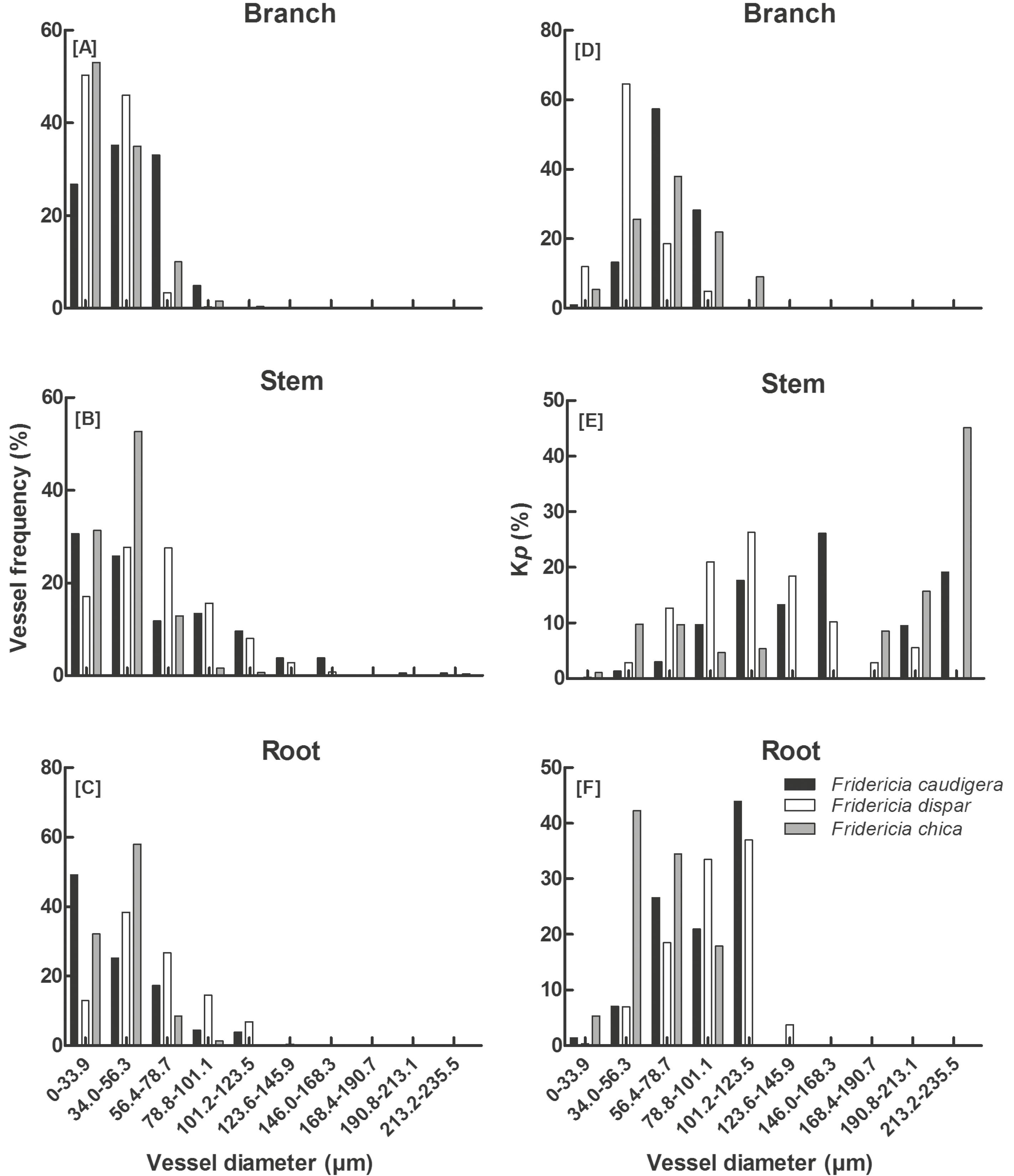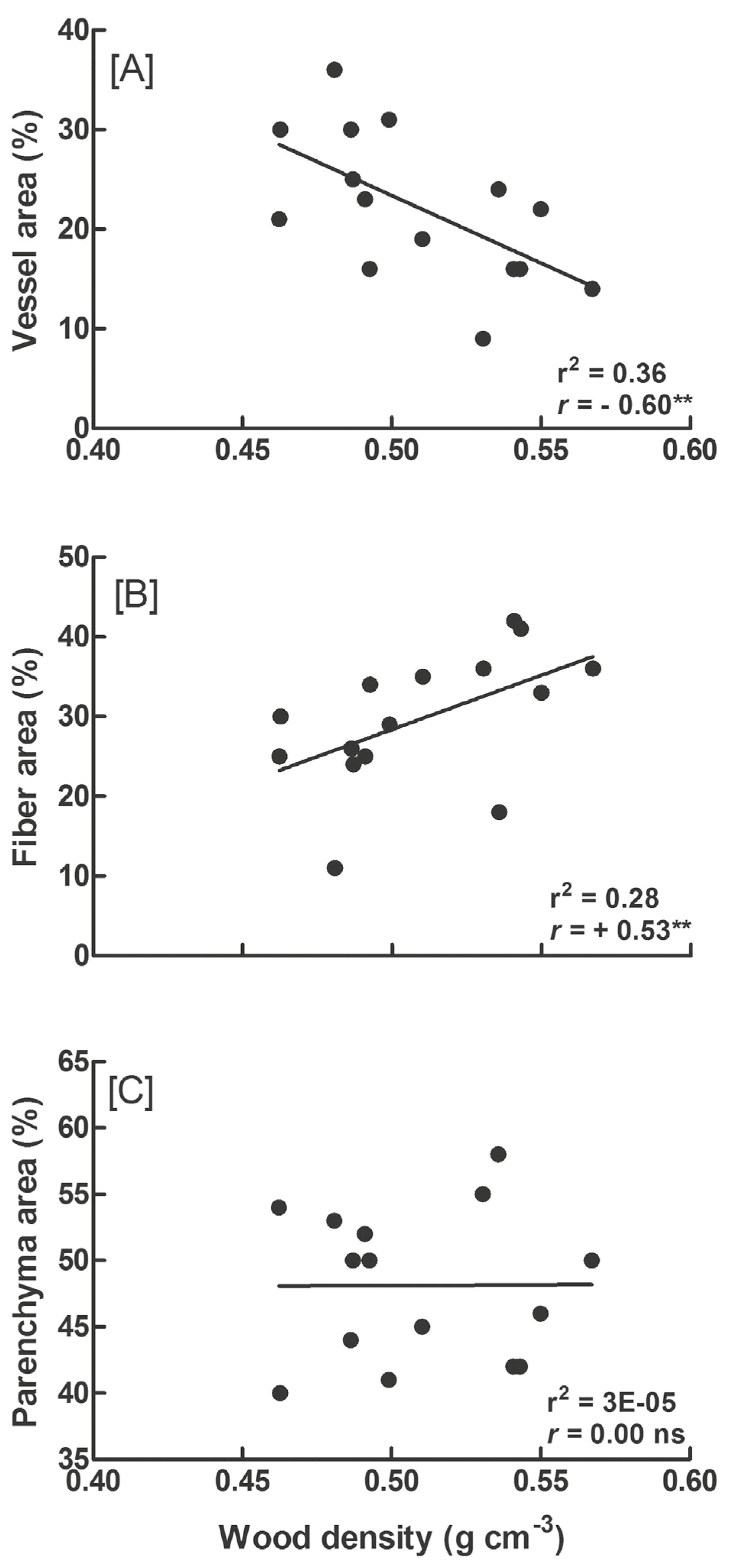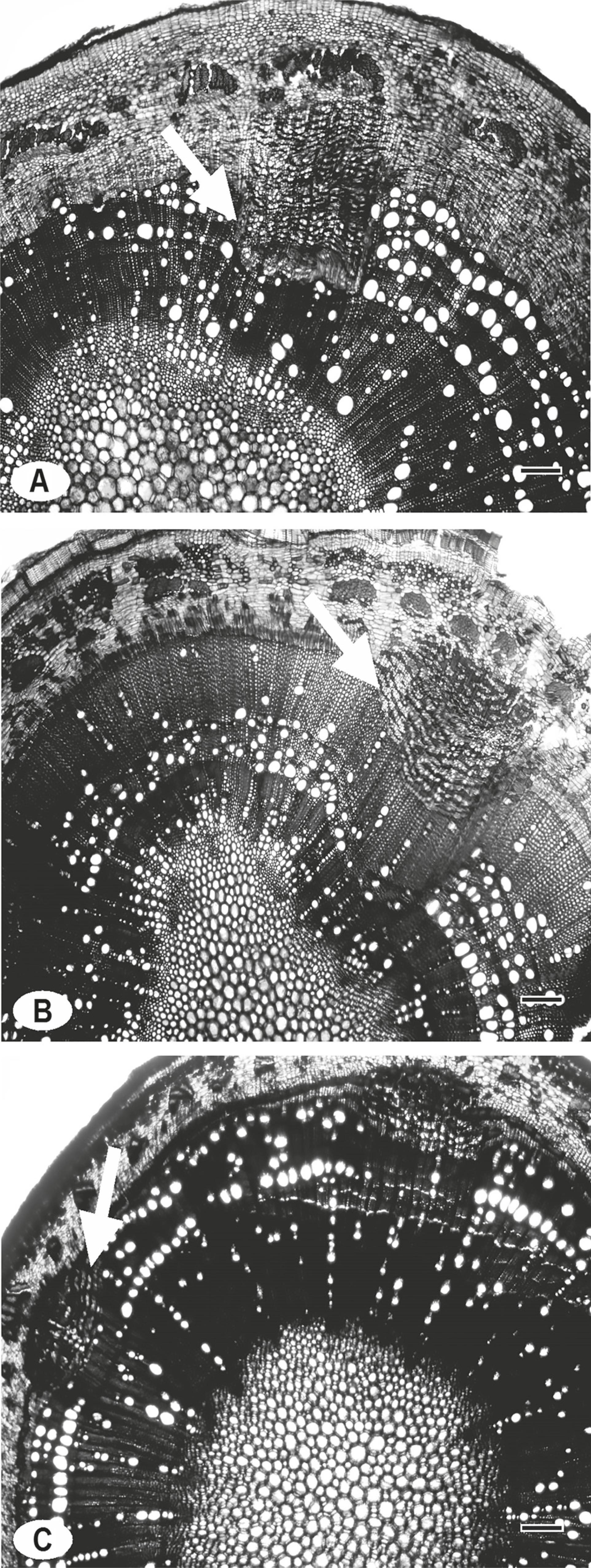Xylem anatomical traits can provide insights regarding the mechanisms affecting the distribution of vascular plants across environmental gradients. In this study, we aimed to investigate the hypothesis that lianas occurring in semiarid environments have characteristics that maximize the xylem resistance to tension-induced cavitation along the root-stem-branch continuum. To gather information regarding the hydraulic architecture of the lianas, we analyzed several anatomical traits of wood: cross-sectional area occupied by the parenchyma (AP), fibers (AF), and vessels (AV); average vessel diameter (d); wood density (WD); pit diameter in the vessel wall (dpit); pit density (Npit), and potential hydraulic conductivity (Kp) in branches, stems, and roots of three congeneric species of lianas that occur in two vegetation types of the semiarid regions of Brazil. We found that lianas in these semiarid environments possess a number of the following xylem traits that may allow resistance to tension-induced cavitation:1) lower vessel diameter, lower Kp, and higher hydraulic safety in roots and branches; 2) Dimorphic vessels, ensuring both hydraulic efficiency and safety; and 3) small diameter of pits (potentially associated with a decrease in the membrane area of the vessel pits). This suite of traits may provide insight into mechanisms allowing lianas to occur in semiarid environments.
potential hydraulic conductivity; vessel diameter; wood anatomy; wood density; xylem





